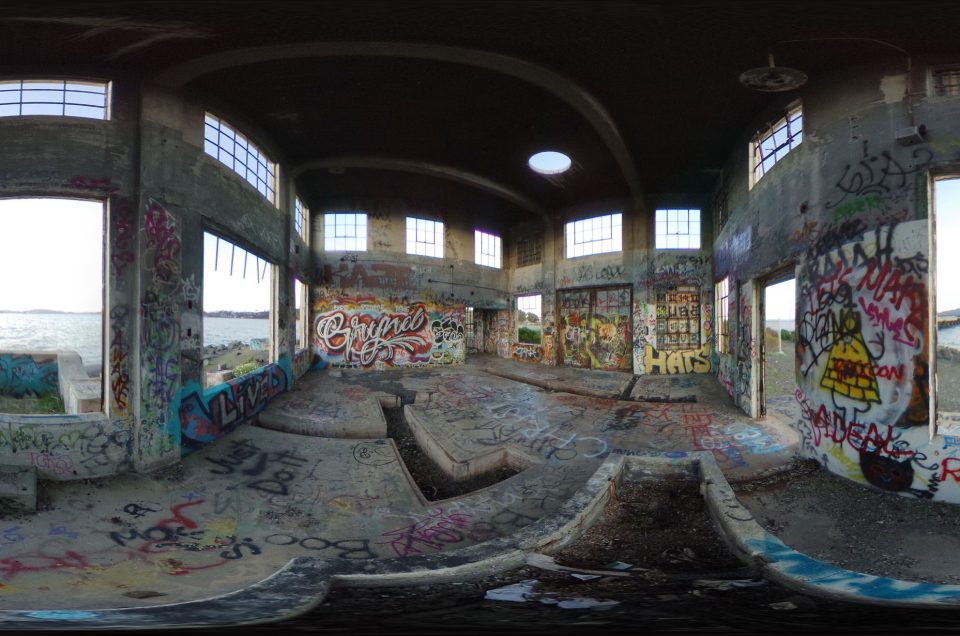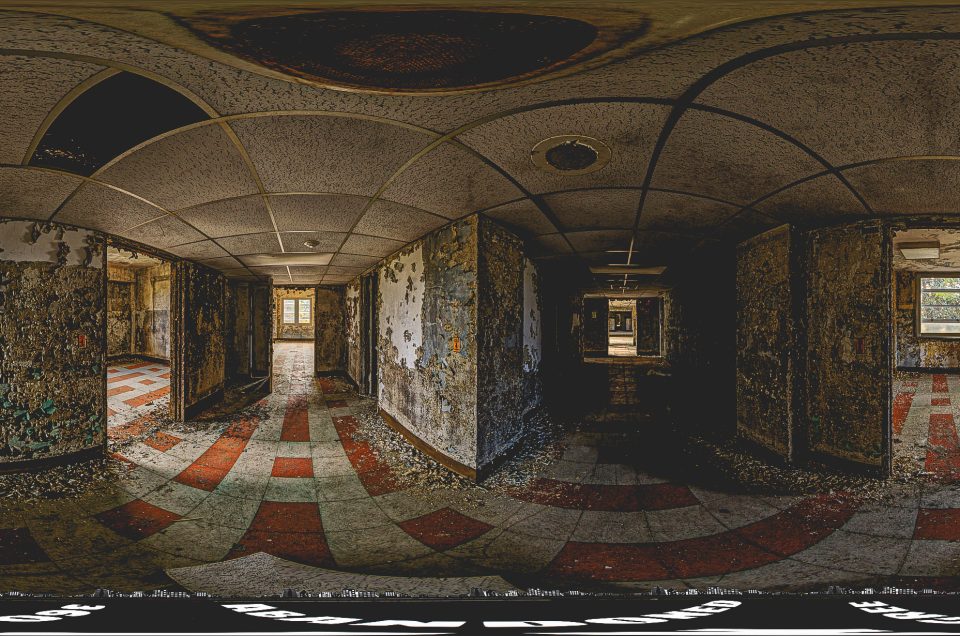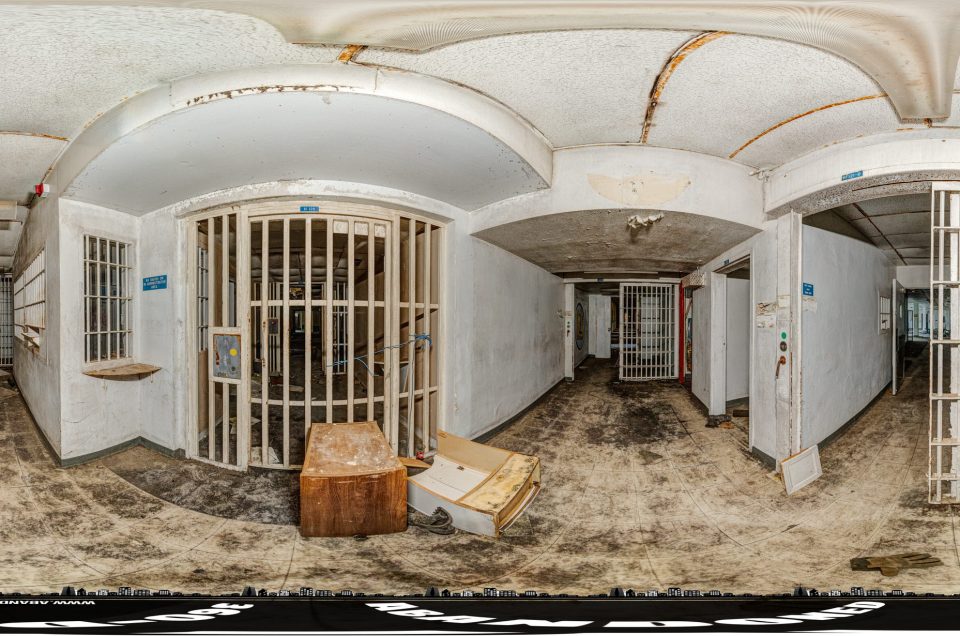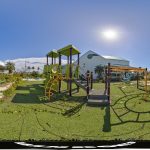Camp Beechwood: Sodus Point’s Abandoned Girl Scout Camp
Take a look at Camp Beechwood in New York, a once-active spot that now carries that quiet, weathered charm urban explorers love. Its aging structures, worn paths, and traces of past activity make it a fascinating place to study and imagine what it might have looked like in its prime. For anyone passionate about URBEX and documenting forgotten spaces, this location offers plenty of visual interest.
Be sure to explore the amazing 360-degree panoramic images on Google Maps Street View below to get a closer look at the layout, textures, and decay throughout Camp Beechwood. These immersive views let you scout the area digitally, spot details you might otherwise miss, and appreciate how time has transformed the site.
Photo by: Scott Schild
Photo by: Patrick O’Leary
Photo by: Scott Schild
Camp Beechwood sits quietly at the edge of Lake Ontario in Sodus Point, NY – a time capsule of laughter and adventure for generations of Girl Scouts. Once a vibrant camp, its forested cabins and shoreline now lie abandoned, beckoning urban explorers (URBEX) to wander among the remains. Founded in 1929 by the Girl Scouts of America, Camp Beechwood was built on roughly 150 acres of forested land and boasted sandy beaches and towering beech trees. For nearly seventy years the Girl Scouts of the Rochester area spent summers here, canoeing on Lake Ontario, hiking the woods, and roasting marshmallows by the fire ring. Today, the crumbling mess hall, wooden cabins, and even an old swimming pool stand overgrown by nature – a ghostly playground for modern-day explorers. Despite its quiet appearance, the site is still monitored by a caretaker and cameras, so visitors are urged to tread respectfully.
Nestled in the woods by the lake is an old cabin that once housed eager campers. Camp Beechwood opened its doors in 1929 and served as a summer retreat for Girl Scouts of the Genesee Valley Council. Girls named the camp after the American beech trees lining the lakeside bluff (hence Beechwood). For decades, daughters and granddaughters of local families earned badges in canoeing, crafts, and nature study here. Wide gravel roads led from Lake Road up through groves of pine and hemlock to campgrounds and cabins, while an expansive pebble beach at the bluff’s base was “the focal point of many Girl Scout activities” during sunny days. Over seventy seasons the camp became woven into the community’s story – mothers who once held lanterns for their daughters now retold campfire tales of days spent here.
A Forest Retreat by the Lake
Camp Beechwood’s setting is as striking now as it was then. The camp sprawls across roughly 250 acres of mixed forest – pine groves giving way to birch and maple, marshy ravines, and a dramatic two-story cliff on Lake Ontario’s edge. From the bluff, campers once gazed upon the sun glittering off Maxwell Bay. The bay and nearby Maxwell Creek (also known as Salmon Creek) are ecologically sensitive; even in camp’s heyday, settlers noticed harmful algae blooms from farm runoff affecting the bay’s clear waters. Today, wildlife thrives: deer, ground squirrels, and migratory birds make homes in the trees while the late-afternoon sun filters through leaves onto overgrown trails. Photographers and adventurers agree that in fall, when the woods blaze with color, Beechwood takes on an especially haunting beauty – a perfect blend of nature and faded human history.
Campers would have woken each morning to birdsong instead of alarm clocks. They would fish or swim in the bay (when safe), paddle canoes, and learn campcraft. Even after all these years, clues to that life remain visible. A circular fire ring still lies in a clearing, surrounded by stone benches (where girls once gathered to sing “On Top of Old Smoky”). The old mess hall’s chimneys stand half-intact among the trees. Lean-to cabins – open-sided wooden shelters with vinyl curtains – dot the forest floor, their canvas flaps often painted with scout troop names and dates from decades past. Each structure offers a snapshot of camp life: you can almost picture girls in scarves pinning badges on stuffed animals, or counselors preparing canoe trips. As one visitor mused, “The empty deteriorating cabins are reminiscent of an ’80s horror slasher flick” – but for seasoned URBEX explorers, they’re a thrilling step back in time.
These canvas tents and rustic cabins were once home to Girl Scout campers. In its prime, Camp Beechwood had everything a scout needed: a large dining (mess) hall for meals, cabins and Adirondack-style lean-tos for lodging, a campfire circle, and even an Olympic-size swimming pool. A commentary on the ruins notes that Beechwood’s abandoned buildings include “a mess hall, various cabins, vinyl-curtained lean-tos, a campfire ring, and even a swimming pool”. (The pool is unusually large for a camp – big enough for races and ceremonies – though it now lies shattered and empty.) Generations of scouts would have carried dishes down the hill to the lake for cookouts, canoeing adventures, and sunset campfires on the beach. The pebble beach was the focal point of many water activities and sunsets, as it overlooks the calm Maxwell Bay.
Why Camp Beechwood Closed
By the early 1990s, the party was winding down. Several factors converged to end Camp Beechwood’s long run. First, maintaining a camp on prime lakefront became costly: taxes on Ontario Shore property had “increased dramatically” over the years. Meanwhile, the Girl Scouts organization was facing declining membership (a national trend by the 1990s) as more girls opted for other interests. Nature itself was against the camp: recurring storms battered the bluff and toppled trees. The Rochester Subway photographer’s log explains that rising lake waters and winds “caused uncontrollable erosion, landslides and fallen trees along the shore,” leaving submerged logs everywhere. The water near camp became strewn with tree trunks and debris, creating a “creepy and somewhat dangerous swimming environment” for campers. In time, the bay’s health also declined: agricultural runoff had led to algal blooms in Maxwell Creek, making the water unsafe.
Faced with budget-busting upkeep, the Girl Scouts began trying to sell the property by 1995. In January 1996 the State of New York bought the land (about 299 acres total) for $600,000 under a Clean Water/Clean Air Bond Act, partly to protect the Lake Ontario watershed. But then state budget crises intervened. The camp’s buildings were never remodeled or reopened for public use. Instead, Beechwood was quietly converted into a state preserve, accessible but undeveloped. By around 1996 the Girl Scouts officially closed Camp Beechwood for good. Its 70-year story effectively ended in a few rainy summers, and the campgrounds became still and overgrown.
Autumn logs washed up on the shore – evidence of how rising Lake Ontario waves battered the camp. By the 1990s, shoreline erosion at Camp Beechwood had worsened significantly. Severe storms carried away pieces of the bluff and dropped trees into the water, making lakeside swimming dangerous. In 2016, explorers found clumps of old logs just like these at Maxwell Bay, along with a sunken dock. As one local historian noted, “The lake waters were filled with downed trees just below the surface” by camp’s final years. The loss of its beach only hastened the camp’s decline. After 1996 the gates were simply left open – there was no grand farewell, just a quiet abandonment.
Beechwood State Park Today
Today Camp Beechwood forms part of the (unofficial) Beechwood State Park. The land is owned by New York State but managed by the Town of Sodus. While the park is open year-round to the public (dawn to dusk, free of charge), little has been done to restore the camp’s facilities. Instead the old summer-camp area is slowly being reclaimed by the forest. Mower paths from the entrance road and two small parking lots are about the only maintained features. The rest of Camp Beechwood is a tangle of trails, old cabins, and nature. Some areas are dense with bamboo and high grasses, others are low wetlands. In October, fields of golden goldenrod and rust-colored ferns pepper the grounds. Squirrels scurry past as deer wander through the sites where girls once set up tents.
A future camper has strung a tarp over an abandoned lean-to. In many ways, little has changed since 1996 – the wooden shelter and picnic tables are still here, along with remnants of camp signs and Graffiti. A 2023 park guide describes how the Olympic-sized pool now “lies in ruins” and the large wooden dock is broken up on shore. Cabins that are still standing feature peeling paint, smashed windows, and vines curling inside. One building – likely the old laundry or craft lodge – is completely roofless now. Other spots are almost intact: a few lean-tos sit ready to shelter five scouts just as they did in 1930. Some newer visitors have even left their own marks – most of them good (trail map tags, nature journals), though there is also stray vandalism on walls. By 2019 a park caretaker had been hired and camping for up to five days at a time was allowed. That said, violence and major fires in past years prompted temporary closures. As of 2020 the park is back open for free camping. Remember: Camp Beechwood still belongs to the Town of Sodus, and trespassing inside the structures is officially discouraged. In other words, explore at your own risk and please leave everything as you found it.
Despite neglect, the campsite is now a peaceful spot for hikers and photographers. Birdsong and wind in the pines are the main sounds, and the only human smells are campfires burning fallen brush. Photographers praise the contrast of human structures and nature’s takeover: one guide notes that “the juxtaposition of decaying human-made structures with thriving nature provides countless opportunities for evocative imagery”. Others point out that Beechwood’s flat, level terrain makes it an easy URBEX stroll compared to hillier parks. In fact, Beechwood State Park (as it’s officially known) has no entry fee or gates. It even allows dispersed camping and campfires – though visitors must carry out all trash. Many urban explorers treat it like a giant haunted playground: they set up clever photo shots in the abandoned cabins or do ghost-story sound recordings by the fire pit. (Camp legend says that on still nights you can almost hear faint echoes of camp songs in the wind, though of course that’s likely your imagination.) In any season, the camp’s colors stand out: in spring fresh green shoots weave through the campfire ring, summer yields a curtain of wildflowers, and fall brings fiery reds and golds that highlight the aging wood.
Why Urban Explorers Love Camp Beechwood
Camp Beechwood has become a classic URBEX destination in New York. Unlike dangerous large city ruins, this site is relatively safe and legal to visit – it’s on public park land (with a caretaker on-site) – but it still feels thrillingly abandoned. Explorers often share tips and photos online, praising the sense of history. One fan explains: “You can wander inside the cabins, step on creaky floorboards, even peer at rusted old camp tables. Everything is frozen in time.” The ghost town vibe here is authentic, yet gentle. Because the park staff won’t tear down the buildings (they only removed a few unsafe walls), you can peek inside cabins whose interiors look exactly as they did when closed – bedsprings and light fixtures left behind, plates still on the dining table, books on desks.
For those intrigued by history, Camp Beechwood also holds human stories. Many locals still remember seeing Scouts trudge up Lake Road to camp each summer. The 2018 video by local historians notes: “Thousands of Rochester-area Girl Scouts spent parts of their summers at Camp Beechwood”, earning memories that lasted decades. In recent years, organizations like the Boy Scouts and SUNY environmental researchers have taken interest in preserving parts of Beechwood. Even so, most knowledge survives in old photographs and shared recollections. Walking here, you may find plaques or journals left by past visitors – reminders that every tree and doorway was once a place of laughter.
Below are some things not to miss and tips if you plan to explore Camp Beechwood yourself:
-
Historic Highlights: Seek out the mess hall (a large barn-like building near the center), the rim of the old swimming pool with its red lifeguard chair, the deteriorated wood dock on the shoreline, and the scattered lean-tos by the bluff. These key landmarks give a full sense of camp life. For example, an old raft is half-submerged near the Bay, and low concrete picnic tables sit next to one cabin – the very spots where scouts would have gathered to eat.
-
Safety Gear: The “overgrowth” is real – long sleeves, pants, and sturdy boots are must-haves. The camp is often knee-deep in grass and vines in summer, and even in spring deer ticks can abound. Atlas Obscura warns explorers here to wear long socks or gaiters and check each other carefully for ticks after hiking.
-
Respectful Conduct: Camp Beechwood is owned by the Town of Sodus, so it is legal to visit, but remember that many structures are unstable. Never force a door open or climb on a roof. Take only pictures and leave only footprints. In the words of long-time explorers, “Treat it like an old cemetery”: photography and journaling are fine, but vandalism is not. In fact, security cameras have been placed discreetly around the property to discourage graffiti and trespassing. Note that the small white house at the entrance used to belong to the camp caretaker and is now private property; do not block its driveway.
-
Best Time to Visit: If you can, aim for late morning on a clear day. The park is open dawn to dusk year-round, but facilities are minimal and water is not potable. Autumn is a particularly magical time: vibrant leaves surround the camp ruins. Also, weekdays tend to be quieter. (Most locals just hike the trails or picnic at the top lot; you’ll likely have the old camp to yourself if you keep moving.)
-
Camping: Free primitive camping is allowed on-site for up to five days (as of 2020). If you backpack in and set up a tent near the site (follow Leave-No-Trace ethics), you can sleep under the canopy of this ghost camp. Bring a tarp and supplies – but absolutely take all trash out with you. Winter camping is possible too, but check local regulations and weather first.
A boarded lean-to cabin on the ground – just one example of the many structures still standing. Exploring here can feel like stepping into a nature documentary. Notice how vines and moss have almost entirely covered this little shelter, yet its wooden frame is intact. These cabins originally had canvas curtains (removed now) for walls, and groups of scouts would sleep side by side on wooden bunks inside. Seeing them empty and silent is oddly inspiring – a tangible echo of all the summers and songs that once filled this spot. Remember: every structure here tells a story. Before you leave a site, stop to imagine what it looked like in its heyday. This blend of history and wilderness is exactly why Camp Beechwood is such a special URBEX spot in New York.
The Legacy of Camp Beechwood
Camp Beechwood’s story is more than just decay and vandalism headlines; it’s a chapter in local history. It reminds us of a time when outdoor adventure and Girl Scouting were deeply interwoven with community life. Tour guides and historians occasionally lead hikes here, sharing old photos of Scouts canoeing or singing by the campfire. The park also serves an ecological legacy: by purchasing the land, New York State helped preserve a large piece of shoreline and watershed on Lake Ontario. In this way, Camp Beechwood’s abandonment ultimately benefited conservation efforts, even if its cabins were sacrificed in the process.
Nearby attractions further enrich the experience. Just a few miles away is the Sodus Point Lighthouse Museum (built in 1870) and the picturesque harbor, which you can visit before or after touring the camp. And for a change of pace, the dramatic Chimney Bluffs State Park with its huge clay spires is only a short drive south of Beechwood. Many urban explorers make a day out of it: paddle on Maxwell Bay in the morning, tour Beechwood’s ruins by afternoon, then relax by a campfire at sunset.
Camp Beechwood is a shining example of how “the urbex in New York” can be both educational and exhilarating. It offers tangible links to the past and an open invitation to adventure. When you hike here, you’re literally walking through history – in this case, nearly a century of Girl Scout summers. The silence and solitude contrast sharply with the site’s lively memories, which is part of what makes it unforgettable.
Conclusion
If you’re an urban explorer, history buff, or nature lover, Camp Beechwood promises an unforgettable adventure. You’ll tread the same dirt where Girl Scouts once played, witness nature reclaim wooden cabins, and frame Instagram-worthy shots of decay and beauty. Unlike many off-limits locations, Beechwood is welcoming as long as you come with respect and safety in mind.
So pack your sense of wonder (and a camera!) and head to Sodus Point. Take the trail down to the mess hall, follow the path to the old swimming pool, and climb the bluff to survey Maxwell Bay. Listen to the wind whistle through broken windows, and imagine campfires burning bright in those very cabins. In Camp Beechwood, the past is everywhere – in the graffiti on the walls, the pattern of fallen leaves, and the very air. Every tree here has witnessed adventures, and now you get to add yours.
If you liked this blog post, you might be interested in learning about the Washington Building at Men’s State Prison in Georgia, the Mombello Psychiatric Hospital in Italy, or the Bell Isle Pump House in Virginia.

A 360-degree panoramic image at the abandoned Camp Beechwood in Sodus Point, New York. Photo by: Scott Schild
Welcome to a world of exploration and intrigue at Abandoned in 360, where adventure awaits with our exclusive membership options. Dive into the mysteries of forgotten places with our Gold Membership, offering access to GPS coordinates to thousands of abandoned locations worldwide. For those seeking a deeper immersion, our Platinum Membership goes beyond the map, providing members with exclusive photos and captivating 3D virtual walkthroughs of these remarkable sites. Discover hidden histories and untold stories as we continually expand our map with new locations each month. Embark on your journey today and uncover the secrets of the past like never before. Join us and start exploring with Abandoned in 360.
Do you have 360-degree panoramic images captured in an abandoned location? Send your images to Abandonedin360@gmail.com. If you choose to go out and do some urban exploring in your town, here are some safety tips before you head out on your Urbex adventure. If you want to start shooting 360-degree panoramic images, you might want to look onto one-click 360-degree action cameras.
Click on a state below and explore the top abandoned places for urban exploring in that state.








